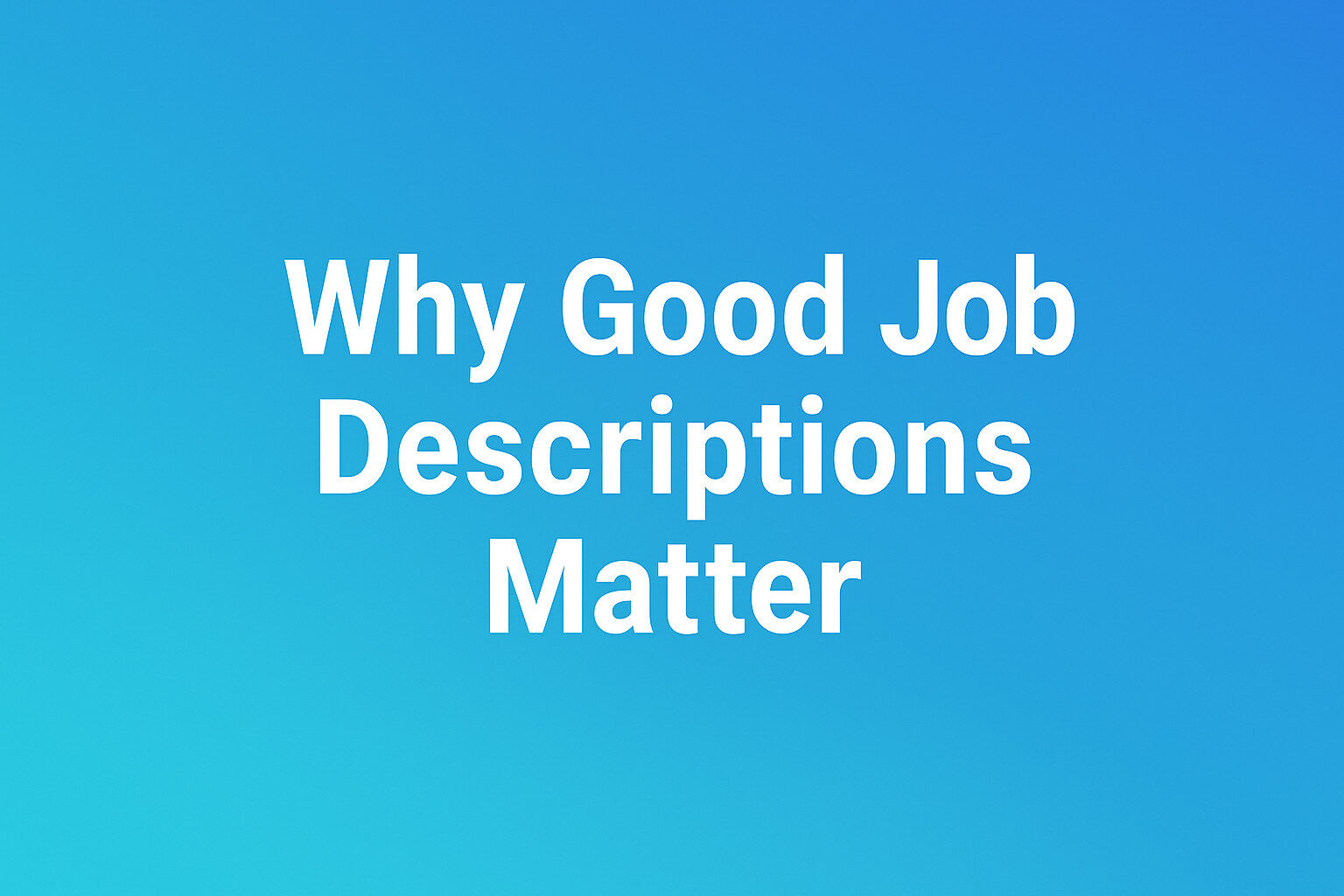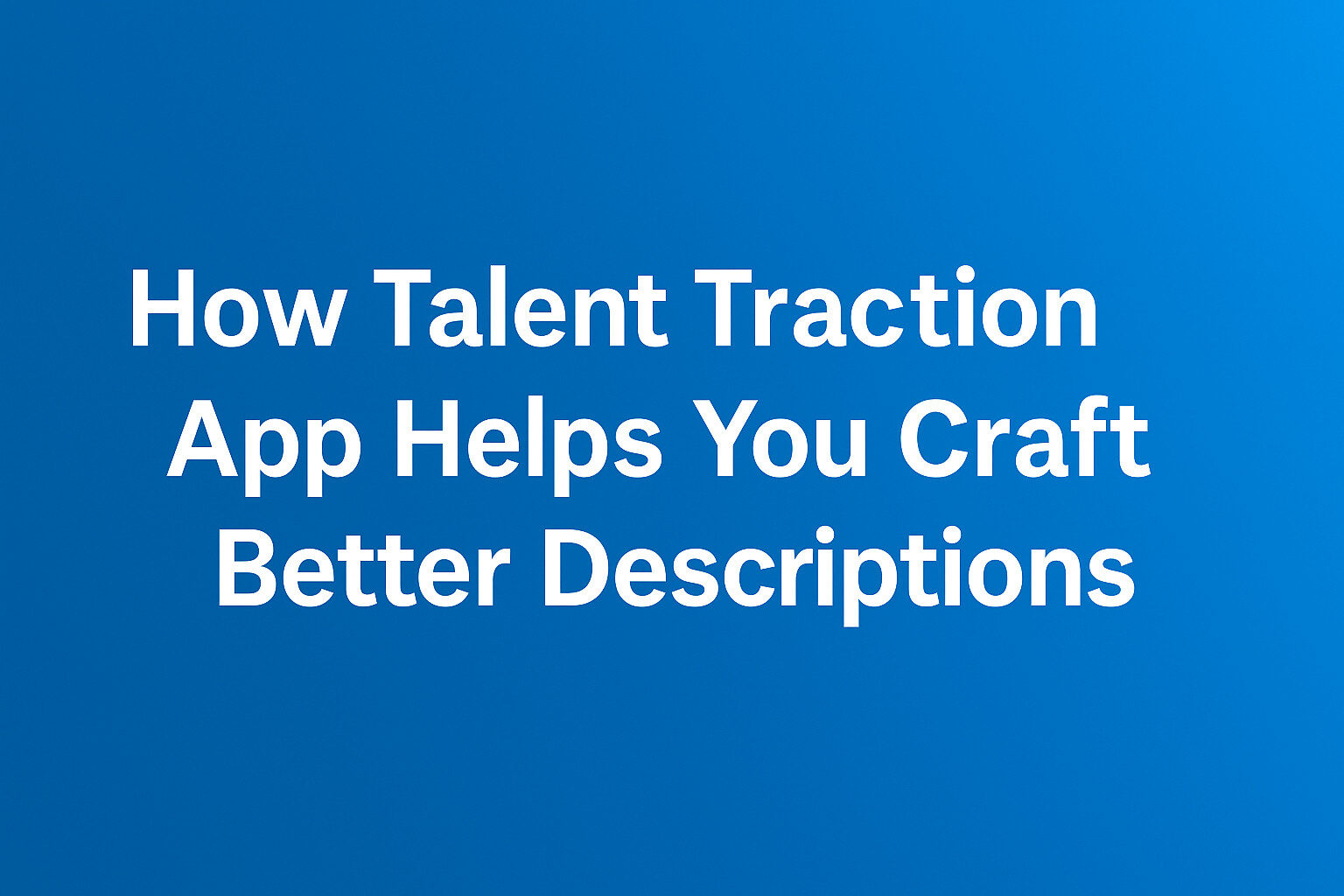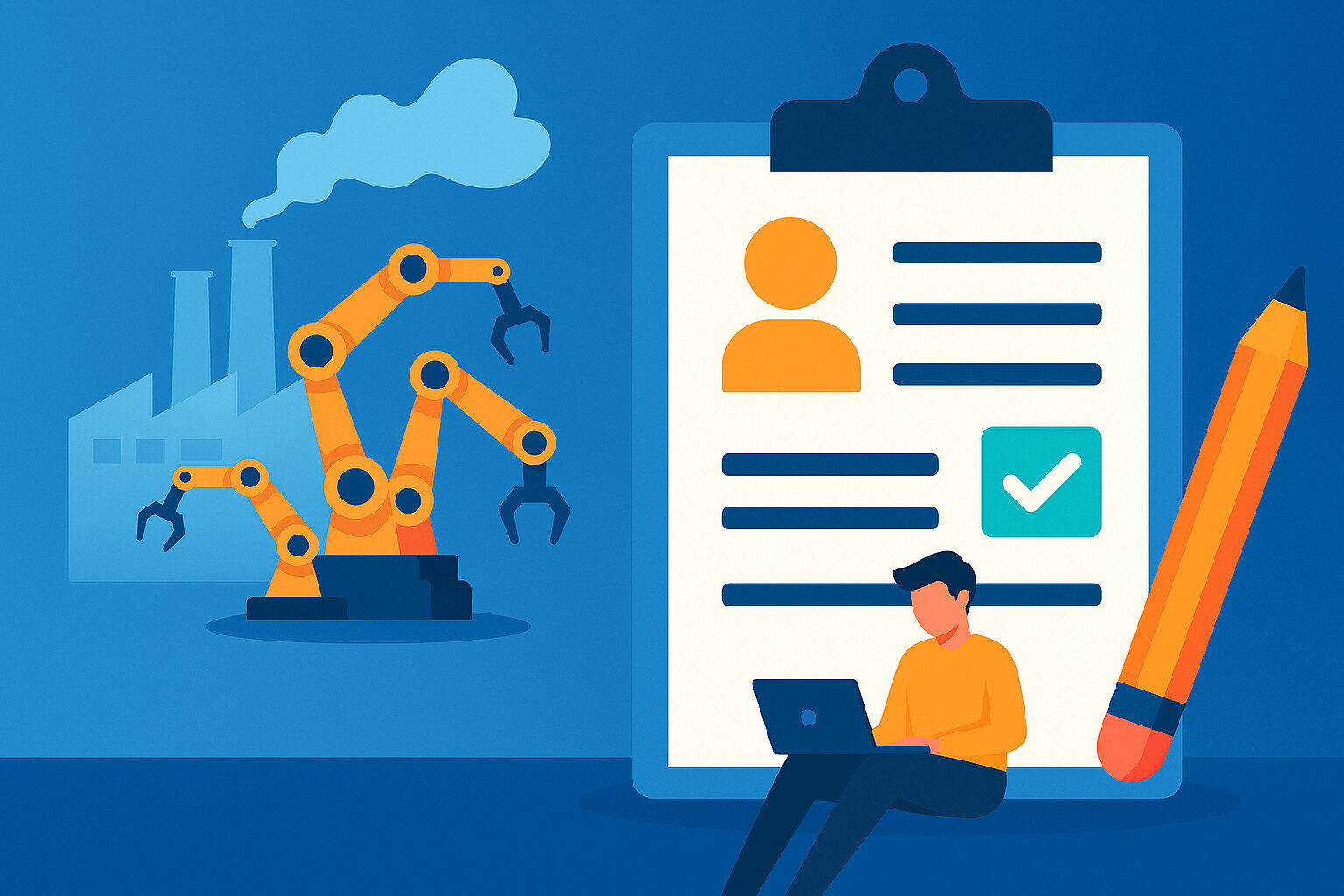- Why good job descriptions matter, especially in industrial roles
- Data & trends around job descriptions and response/attraction rates
- Key components to include in an industrial job description
- Language, formatting, and inclusive writing best practices
- How to tailor descriptions for different industrial roles (manufacturing, maintenance, engineering)
- How our new app can simplify and optimize your job description creation
- A step-by-step template / checklist
- Common mistakes and how to avoid them
- Next steps & call to action

1. Why Good Job Descriptions Matter (Especially in Industrial)
A job description is not just a formality — it is a strategic tool that influences:
- Candidate attraction & quality — the better the clarity and fit, the fewer unqualified applications you get
- Hiring speed / time to fill — clear descriptions reduce back-and-forth, miscommunication, and rework
- Onboarding & expectations alignment — they become a reference point for roles, responsibilities, and evaluation
- Performance measurement & accountability — you can link what was promised to what gets delivered
In industrial settings manufacturing plants, plants with safety, equipment, regulatory constraints, ambiguity in job roles causes safety risks, quality issues, higher turnover, and cost overruns.
Because industrial jobs often involve physical demands, safety compliance, shift work, and domain-specific skills (machinery, controls, certifications), getting these descriptions right is even more critical.
2. Data & Trends You Should Know
Here are data-driven insights that help you understand what works (and what doesn’t) in job description writing:
- Textio’s research shows that using growth-mindset language (e.g. “opportunity to grow”) helps jobs fill ~8 days faster than descriptions without it.
- Job postings that overuse generic language or third-person passive phrasing (e.g. “the ideal candidate will”) tend to discourage engagement.
- Best practices suggest that job postings between 300–660 words tend to perform well too long and you lose interest; too short and you’re vague.
- Keep updating descriptions: roles evolve, technologies change. Stale job descriptions lead to mismatch between expectations and reality.
- Involve current employees in drafting roles those doing the work often know best the nuances, challenges, and skills required.
These trends underscore that job description writing is both art and science. The more data you lean on, the sharper your descriptions will be.
3. Key Components of Effective Industrial Job Descriptions
Below is a breakdown of what your industrial job description should include, with guidance specific to industrial roles:
Section | What to Include | Tips / Industrial Considerations |
Job Title & Tagline | Clear, concise title + optional short tagline (e.g. “Senior Maintenance Technician Automation Focus”) | Avoid jargon or internal codes. Use titles that candidates search (e.g. “CNC Maintenance Technician”). |
Job Summary / Overview | 2–4 sentences summarizing core purpose, reporting, and context | Mention plant, shift, scale of operation (tons/day, pieces per shift), and key objectives |
Essential Duties / Responsibilities | Major responsibilities, frequency, metrics, and scope | Use bullet points; quantify where possible (e.g. “maintain 20 injection molding machines”); include safety or compliance duties |
Technical & Soft Skills / Competencies | Required skills, experience, behavioral traits | Distinguish required vs preferred. Include domain skills (PLC, hydraulics, pneumatics, SAP, quality systems). Use competency-based language too. |
Qualifications & Certifications | Education, years of experience, mandatory certifications | For industrial roles: OSHA, forklift, welding, electrical, control systems, lean/six-sigma, etc. |
Working Conditions & Physical Demands | Environment (heat, noise, chemicals), shift schedule, overtime, travel | Be transparent about hazards, PPE, shift rotation |
Compensation & Benefits | Base salary or range, bonus/incentive, benefits, shift differential | Posting at least a range helps filter and attract correct level candidates. |
Reporting Structure & Team | Who they report to, who reports to them (if any) | Helps candidates visualize where they fit |
Growth/Development Opportunities | Where can the role lead? Training, promotions | Excellent tool to attract passive candidates who value career growth |
Company Snapshot & Culture | Brief about firm, mission, values, facility, safety culture | Tailor this; manufacturing has unique cultural signals: safety, reliability, continuous improvement |
Legal & EEOC Disclaimer | “Other duties may be assigned…” and discrimination statements | Ensure compliance with U.S. laws and transparency |
4. Language, Tone & Formatting Best Practices
How you write matters just as much as what you write. Here are best practices:
- Use “We” and “You” over third-person voice. Descriptions feel more engaging and candid.
- Lead with clarity the first 1–2 bullets should reflect the highest-impact duties
- Keep sentences short avoid run-ons or heavy jargon
- Use growth mindset phrasing (e.g. “grow into leadership,” “expand your skills”)
- Avoid bias / be inclusive avoid gendered or overly restrictive language
- Use formatting bullet lists, headings, bold key phrases, white space
- Highlight required vs preferred helps candidates self-filter
- Use data & specificity e.g. “Manage preventive maintenance on 30 CNC machines,” not “responsible for machine upkeep”
- Test performance see which phrases yield better responses and iterate
5. Tailoring for Different Industrial Roles
Here’s how to adjust the same structure for three common industrial roles:
- Maintenance Technician (Industrial / Automation Focus)
- Emphasize mechanical, electrical, PLC troubleshooting
- Include proactive / predictive maintenance tasks
- Specify shift & overtime needs, safety regimes
- Process Engineer (Plastic / Rubber / Injection Molding)
- Include process optimization, scrap reduction, quality metrics
- Demand data / analytical skills, control systems experience
- Add cross-functional collaboration (R&D, operations)
- Production Supervisor / Team Lead
- Add people management, scheduling, throughput metrics, cost targets
- Emphasize leadership, training, continuous improvement
- Also include floor-level tasks, safety & quality responsibility
Each version should carry the same structure but highlight domain-specific priorities.

6. How Talent Traction App Helps You Craft Better Descriptions
Our new app, https://hire.talenttraction.org/, is designed to make this job description process smarter and faster:
- Smart Job Descriptions: AI-generated role specs aligned with your competency framework.
- Interview Scorecards: Structured evaluation powered by AI insights.
- Export & Integration output ready for ATS upload or posting to job boards
- Automated Resume Parshing: Reduce manual screening time by 70%.
Using this app saves you hours of guesswork and helps your descriptions perform better from the start.
7. Template & Checklist: Step-by-Step
Here’s a streamlined checklist you can use:
- Choose the right job title (reflects search habits)
- Write a concise job summary (why role exists)
- List 5–8 essential duties (bullets, quantify)
- List must-have skills / qualifications
- Add preferred skills separately
- Describe working environment & physical demands
- Provide compensation range & benefits
- Include growth paths & development opportunities
- Add team structure & context
- Write a short company / culture blurb
- Review for tone, clarity, bias
- Get input from employees / managers who know the role
- Use Hire.TalentTraction to validate language, keywords, and structure
8. Common Mistakes & How to Avoid Them
Mistake | Why It’s a Problem | Solution |
Overloading with generic duties | Confuses candidates, attracts misfits | Focus on critical 5–8 tasks, use specificity |
Vague or inflated titles | Leads to mismatched search traffic and confusion | Use titles common in the industry |
Ignoring growth opportunities | Passive candidates won’t move without vision | Include clear development paths |
Poor tone / stiff language | Reduces engagement and response rates | Use “we/you”, growth mindset language |
Omitting the compensation range | Leads to applicants that aren’t aligned | Always include a range if possible |
Avoiding employee input | Misses real nuances of the role | Interview / survey current employees to complement your draft |
9. Measuring Effectiveness & Iteration
Once your job description is live, track metrics to see what’s working:
- Application Volume & Quality
- Time to Fill
- Candidate Drop-off Rate (who visits but doesn’t apply)
- Conversion (interviews / offers accepted)
- Retention / Performance of hires
Use these insights to refine your next version what words drove engagement, which duties were unclear, etc.
10. Conclusion & Next Steps
Writing effective job descriptions for industrial roles is a high-leverage activity. If done well, it filters out unqualified applicants, speeds your hiring cycles, and helps you attract people who will stay and perform.
Next steps for you:
- Use the above template & checklist to audit your current descriptions
- Try creating a new description via Hire.TalentTraction and compare performance
- Embed your top performing description as a “best practice” internally
Monitor the metrics, iterate quarterly




